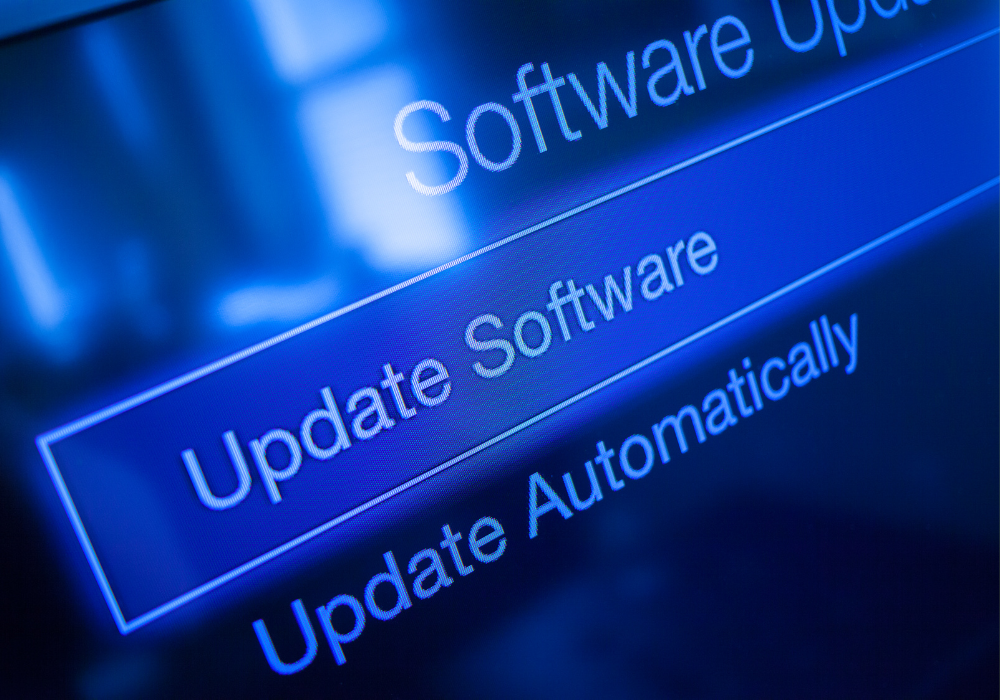In the realm of business, staying one step ahead isn’t just a motto; it’s a necessity. As businesses have grown more interconnected and complex, the software at the heart of these operations has followed suit. Just as one wouldn’t neglect the upkeep of crucial physical assets, the software, too, demands diligent attention in the form of updates. Ignoring this crucial aspect can carry unnecessary risks, not only jeopardizing cybersecurity but also affecting the very efficacy of the system. For business owners, understanding the importance of software updates is essential in ensuring the longevity and success of their enterprise.
Definition and Explanation of Software Updates and Patches:
At its most basic, a software update is a set of modifications to an existing software program. These modifications can range from minor adjustments to wholesale changes that can alter the very face of the program. Updates ensure that software stays relevant, effective, and safe.
Patches, on the other hand, are akin to Band-Aids in the software world. When a specific issue or vulnerability is identified in a software program, rather than overhauling the entire system, developers create a “patch”—a small piece of software designed to address that specific problem. It’s like patching a hole in a boat; it stops the leak without having to build an entirely new vessel.
The different types of software updates
Security Patches:
These are arguably the most critical updates. As cyberthreats evolve, vulnerabilities in software can be exposed, creating potential gateways for malicious entities. Security patches address these vulnerabilities, ensuring that the software remains impervious to the ever-growing list of cyberthreats.
Bug Fixes:
Even the most meticulously crafted software can have bugs—unintended glitches or errors that can hinder its functionality. Bug fixes are updates designed to resolve these issues, ensuring that the software runs as intended without any hitches.
Feature Additions:
As the needs of businesses grow, so must the capabilities of their software. Feature additions introduce new functionalities or tools to a program, enhancing its utility and allowing businesses to leverage the latest innovations and techniques.
Performance Improvements:
Over time, as more data accumulates and systems become more interconnected, software can begin to lag. Performance improvements optimize the existing code, ensuring that software runs smoothly, efficiently, and at the speed that modern businesses demand.
In essence, software updates are not mere optional enhancements; they are crucial components in the lifecycle of any software. They ensure that a program not only continues to serve its primary function but also remains robust against external threats and aligned with the ever-evolving needs of the business world.
How Updates Address Cybersecurity Vulnerabilities
Software updates act as the first line of defense against these vulnerabilities. Developers continually monitor for any potential weaknesses in their programs. Once identified, they work to create solutions, which are then released in the form of updates or patches. By keeping software updated, businesses essentially fortify their digital walls, ensuring that they remain impervious to most external threats.
Common reasons businesses avoid updates
Fearing Downtime
One of the most common deterrents to updates is the anticipated downtime. Businesses worry that, during an update, their systems will be offline, potentially disrupting operations and leading to lost revenue.
Potential Incompatibility Issues
The apprehension that a new update might not play well with existing systems or might introduce new bugs can discourage some businesses from taking the update plunge.
Cost Concerns
Direct costs of updates, especially for enterprise solutions, can sometimes be significant. Moreover, there’s the perceived cost of potential disruptions or the need for training staff on new features.
Fact or fiction? Common assumptions about software updates
Downtime is inevitable and long
Fiction!
While some updates may require a bit of downtime, with proper planning and execution, this can be minimized. Moreover, many updates can be executed during off-peak hours, ensuring minimal disruption.
Outdated software can cause system crashes
Fact!
Newer hardware or other software systems might use protocols or languages that the older software isn’t familiar with. This can lead to system crashes, errors, and general incompatibility issues. Regular updates ensure that software is always in sync with the broader technological environment, reducing the risk of such disruptions.
New updates bring new problems
Fiction!
While no software is immune to bugs, developers spend significant amounts of time testing updates before release. In many cases, the risk of potential new bugs is far outweighed by the benefits of the update, such as security patches or performance enhancements.
Updates are too expensive
Fiction!
While there may be direct costs associated with some updates, the potential indirect costs of not updating, like security breaches or system inefficiencies, can be much higher. It’s an investment in the company’s security and efficiency.
Outdated software slows down devices
Fact!
Over time, as data accumulates and interfaces with other evolving software or newer hardware, older versions can become less efficient, causing systems to slow down, leading to longer loading times, lags in response, and a general decline in system responsiveness.
Best practices for updating your business network software
A proactive approach to software updates is a hallmark of thriving businesses. But knowing the importance of updates isn’t enough; it’s equally crucial to understand the best way to execute them. Here are some best practices to ensure that updating your business network software is as smooth and hassle-free as possible.
Scheduled Updates
Whenever possible, you should schedule your updates. This prevents unexpected updates from happening in the middle of your workday.
Plan Ahead
Always have a calendar of upcoming updates. This allows businesses to inform stakeholders, prepare resources, and allocate time efficiently.
Off-Peak Hours
Whenever possible, conduct updates during times when your business operations are at their lowest ebb—be it late at night, weekends, or during known downtimes. This minimizes disruptions and allows a cushion should anything go awry.
Communicate
Keep your teams informed. Let them know the expected duration, potential impacts, and any steps they might need to follow post-update.
Testing
It is important to set up a sandbox environment for major updates. This will help to prevent any unexpected complications with the new software and your existing technology.
Collaborating With Cybersecurity Providers for Smooth Updates
Collaborating with a managed IT provider is a strategic move for businesses aiming to maintain robust defenses while ensuring smooth operations. Through expert guidance, meticulous deployment, and comprehensive post-update support, these partnerships ensure software updates enhance, rather than disrupt, business continuity.
Expert Guidance
Cybersecurity providers are on the frontlines of the digital battleground. They can offer insights into pressing threats, critical updates, and provide tailored advice for your specific business environment.
Smooth Deployment
Many cybersecurity providers offer managed update services. They handle the entire update process, from testing to deployment, ensuring best practices are followed throughout.
Post-Update Support
Should any issues arise post-update, cybersecurity providers can offer immediate technical support, ensuring that businesses remain operational, and any problems are promptly addressed.
Regular software updates, when done right, can be a seamless and unobtrusive part of business operations, bringing with them a myriad of benefits.
In the intricate world of cybersecurity, it’s vital to have a partner you can trust. Deerwood Technologies stands as a managed services provider committed to alleviating the stresses associated with software updates and multifaceted cybersecurity concerns. By entrusting Deerwood with these responsibilities, business owners can redirect their valuable time and energy towards what truly matters: expanding and nurturing their enterprise.
Reach out to Deerwood Technologies today and invest in a partnership that lets you focus on growth while we safeguard your digital assets.

